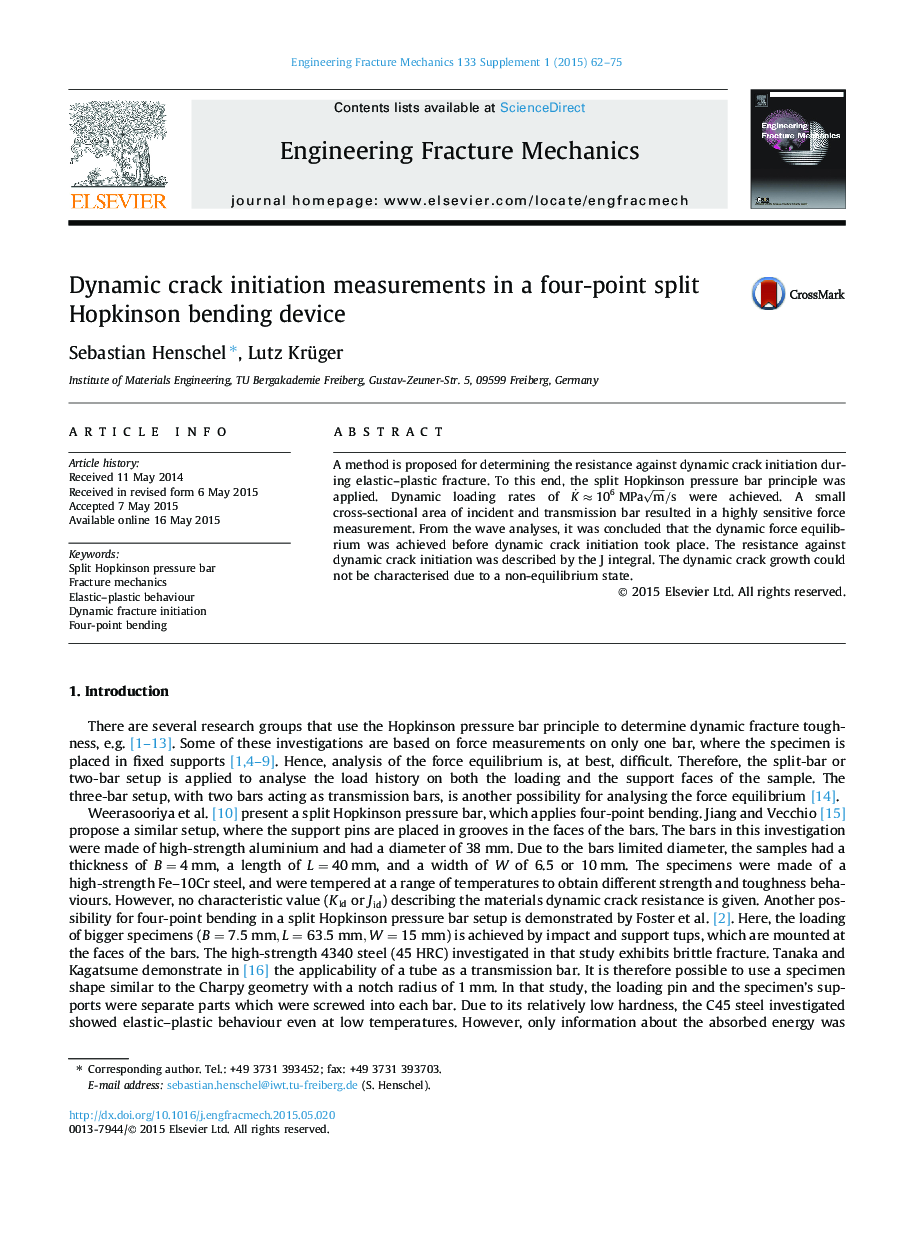| Article ID | Journal | Published Year | Pages | File Type |
|---|---|---|---|---|
| 766686 | Engineering Fracture Mechanics | 2015 | 14 Pages |
•Elastic–plastic fracture is characterised by means of a split Hopkinson pressure bar.•Optimized cross sections of the bars are utilised for high sensitivity to forces.•Pulse shaping is applied to achieve force equilibrium during the test.•The analysis of the force equilibrium is used to detect dynamic crack initiation.•Dynamic crack initiation is described by the J integral.
A method is proposed for determining the resistance against dynamic crack initiation during elastic–plastic fracture. To this end, the split Hopkinson pressure bar principle was applied. Dynamic loading rates of K̇≈106MPam/s were achieved. A small cross-sectional area of incident and transmission bar resulted in a highly sensitive force measurement. From the wave analyses, it was concluded that the dynamic force equilibrium was achieved before dynamic crack initiation took place. The resistance against dynamic crack initiation was described by the J integral. The dynamic crack growth could not be characterised due to a non-equilibrium state.
